September 5, 2024 — Ten years ago, a group of savvy engineers and machinists figured out how to 3D print the world’s first drivable car…in six days. That still boggles the mind, even though those innovators have long since moved onto other impressive feats. But that’s just the start of the story. Printing a car is how they ignited the what if? What came next is the real story.
Go Big at IMTS
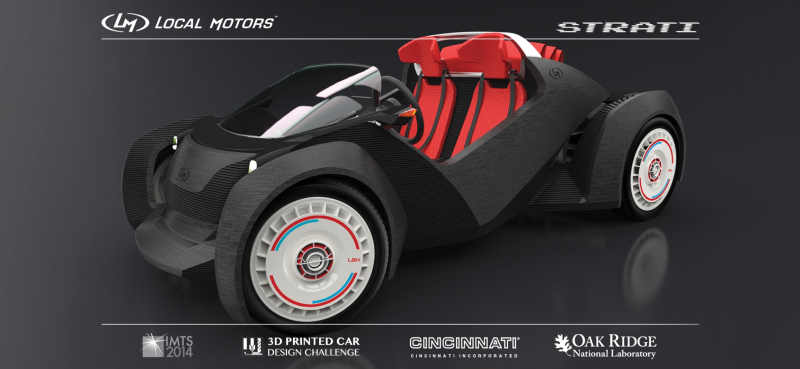
It all began when a small start-up Local Motors decided to 3D print a car called the Strati during IMTS 2014. The International Manufacturing Technology Show (IMTS) is the largest manufacturing conference in the western hemisphere. For a solid week, everyone who’s anyone in manufacturing gathers to show up and show off. More than 100,000 people are expected to peruse the 1.2 million square feet of exhibit space. It’s so big that it only happens every other year.
To print the car, Local Motors teamed up with Oak Ridge National Laboratory (ORNL) who had recently worked with Cincinnati Inc. to develop the world’s largest 3D printing technology called Big Area Additive Manufacturing (BAAM). BAAM used a polymer (ABS)—the same material used to make Legos—reinforced with carbon fiber to print the Strati. That composite made the structure of the car a lot stronger. Then they used a binder jet process to print a mold of the wheel, filled the mold with aluminum, and cast the wheels. It was an early demonstration of hybrid manufacturing. A young engineer named Austin Schmidt in his first job at Caterpillar remembers it well.
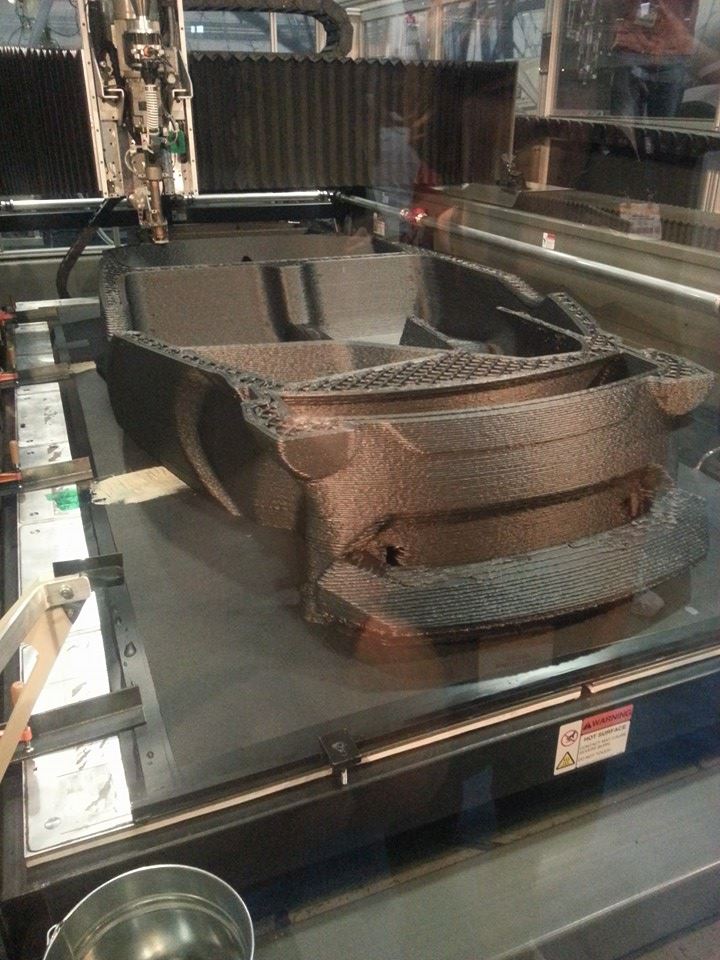
“At the time I had a pretty forward-thinking manager who said, ‘Hey, why don’t you go up to IMTS in Chicago and see what’s interesting up there.’ I walked into IMTS and right in the lobby was the largest 3D printer I had ever seen, and they were printing a car. I thought, that’s really cool, I want to do some of that.” That was his moment of igniting the what if?
Within two years, Austin helped start a company focused on a service that commercializes Large Format Additive Manufacturing (LFAM). Additive Engineering Solutions (AES) now has 24,000 square feet of manufacturing space in Ohio, recently hired their 24th employee, and offers a full range of capabilities to produce tooling, end use products, and large-scale prototypes.
Print it Right the First Time
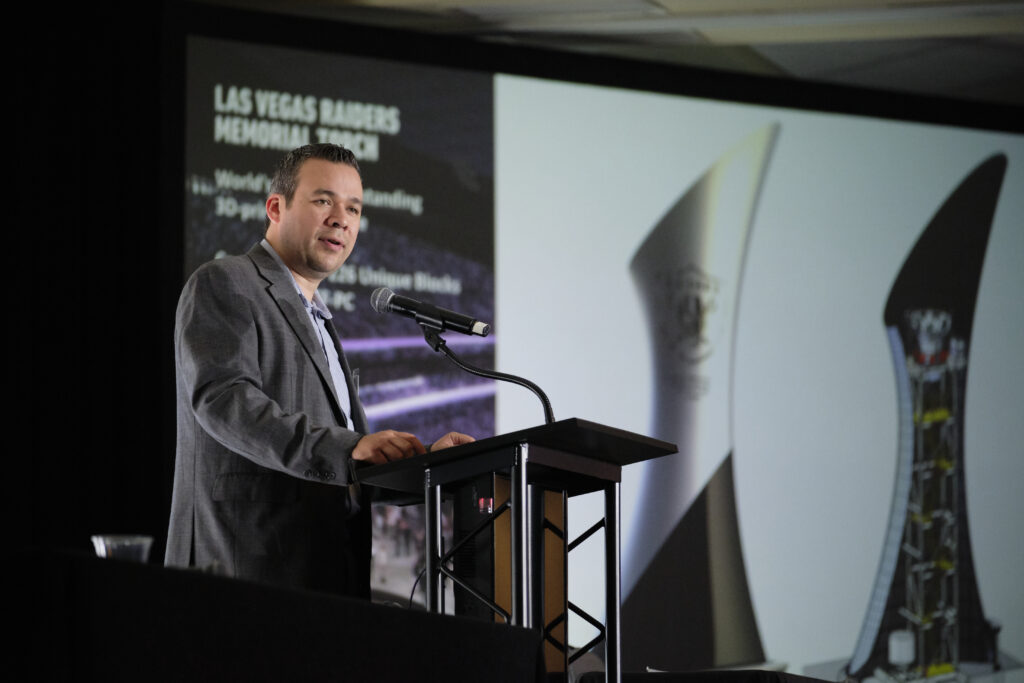
But that’s just one success story. A group of young Ph.D. students at the time, including Eduardo Barocio and Bastian Brenken led by Prof. R. Byron Pipes at Purdue University, saw that early LFAM technology at ORNL in 2014. This was Eduardo’s igniting the what if? moment, and he began working on a virtual twin of the process they called Additive3D. He knew as additive printing grew to make larger and larger products, figuring out how to “print it right the first time” would become even more important.
“You can’t afford to do LFAM without digital twins,” said Eduardo. “We need to shift from recipe-driven manufacturing to analysis-driven manufacturing, equipping engineers with all the information along the way.”
Eduardo is now the Director of the Composites Additive Manufacturing and Simulation Consortium at the Composites Manufacturing and Simulation Center (CMSC) at Purdue and is working to make digital simulation an essential tool across all types of advanced manufacturing.
It was a Mindset Change
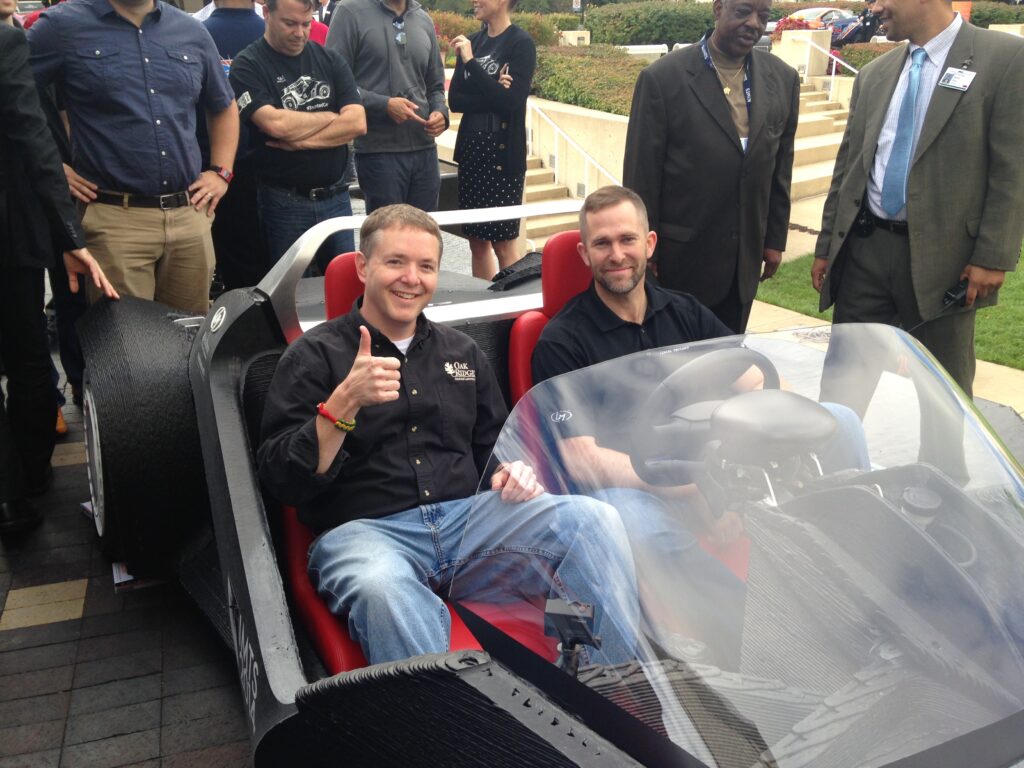
Ten years ago, additive manufacturing was relatively small and really slow. As in, most projects were smaller than a basketball and took weeks to print. There was also a lot of warpage that happened, that meant they had to scrap a lot of products. One of the group leaders working on the printed car from the U.S. Department of Energy’s Manufacturing Demonstration Facility (MDF) at ORNL was Chad Duty.
“Initially, it felt like the wild, wild west, but once we made the extruder longer, redesigned some components, and changed the material, we had a solution that worked surprisingly well!” said Chad. “It worked so well that we finished the print within the first two days and spent the rest of the show printing chairs that people used to sit and chat in front of Starbucks.”
Looking back on printing that car, Chad realizes it had a profound impact on manufacturing and his own career.
“It was a mindset change,” he said. “We birthed an industry when it came to tooling. My colleague Lonnie Love liked to say, ‘The car is the sizzle that gets people’s attention. Tooling is the steak.’ I’ve spent the last 10 years cooking that steak.” As a professor at the University of Tennessee, Knoxville, Chad and nearly 50 students along the way have researched flow mechanics for polymer composites in additive manufacturing.
“I was so pleased to see this past February at JEC that nearly every composites booth was printing tools with the same technology we used to print the car. It’s awesome to see it be so commonplace now.”
Birthing an Industry and an Institute
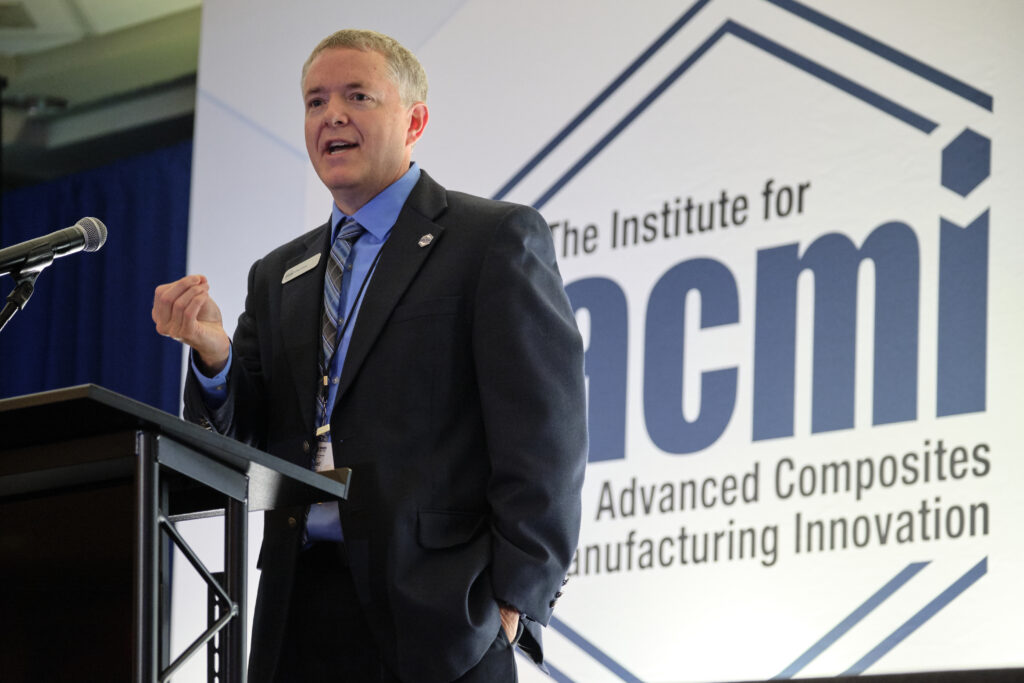
But wait, there’s more. Right on the heels of their success, the ORNL team decided to print another car—this time the famous Shelby Cobra. Within six weeks, they had not only produced a beautiful car; they had pushed technology forward. This project quantified energy efficiency of additive processes, improved techniques for surface finishes, explored new energy absorption processes, and proved the speed at which national labs can work.
Standing next to the Cobra on January 9, 2015, President Obama announced the creation of IACMI—The Composites Institute® with the goal of expediting composites technology to commercialization. By creating an ecosystem of academia, government agencies, economic development groups, and industry, IACMI was set on a mission to convene, connect, and catalyze. For nearly a decade, IACMI has brought together as members all these bright minds from Local Motors to AES, from ORNL to Purdue to work on R&D projects. Oh yeah, and now Chad Duty is the CEO of IACMI.
Workforce Development on the Rise
Since coming on board as CEO, Chad has seen rapid growth in IACMI’s workforce development initiatives. At IMTS 2022, IACMI had just launched social media platforms and a website for America’s Cutting Edge (ACE), supported by the U.S. Department of Defense. We had a modest 10×10 booth, but we drew a lot of interest from students and educators in the Smartforce Student Summit with hands-on activities. More importantly, that presence ignited our what if?
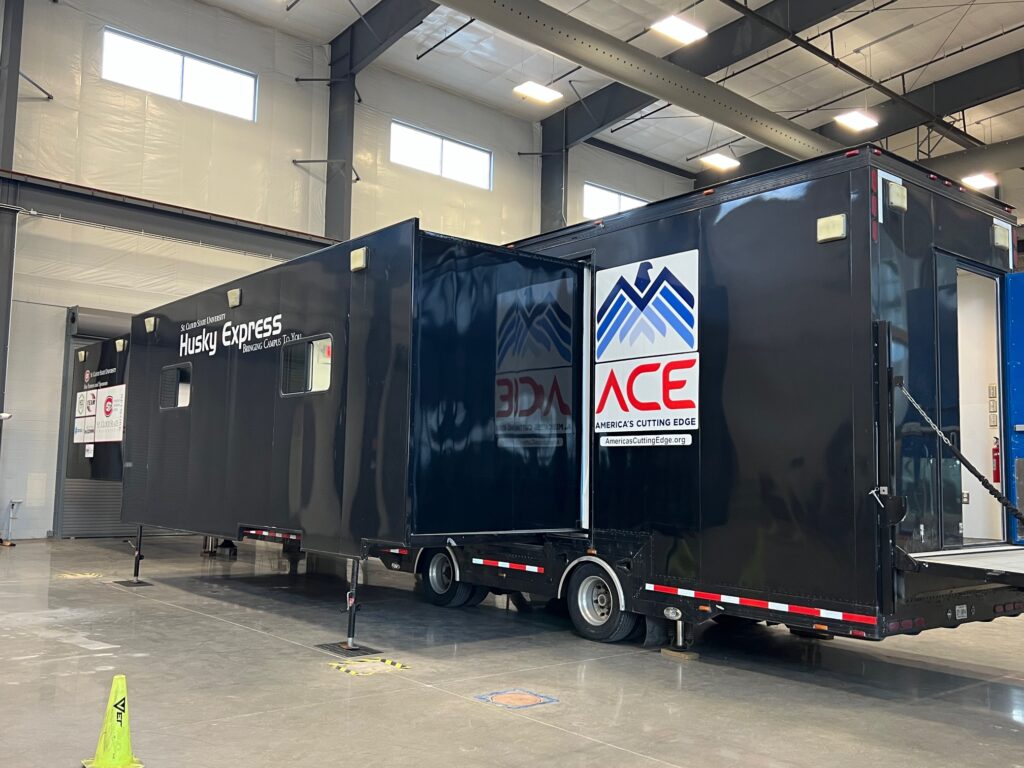
Looking around the Student Summit, you couldn’t miss Drew Crowe’s RV that he was taking around the country, spreading his messaging about a renaissance in manufacturing. With his infectious personality and moving story about his own career path, Drew got our attention. “Genius is equally distributed, but opportunity is not. So, if you think you’re a genius and don’t have that platform, manufacturing can be it for you.”
Our workforce director at the time, Joannie Harmon, looked at Drew’s RV and said, “Next time, I want us to have a mobile unit with the screaming eagle on the side!” For IMTS 2024 in the 2nd floor East Building (#121370), we invite you to tour our 56-foot mobile training center, the Husky Express from St. Cloud State University, that will travel throughout Minnesota offering CNC training. And, yes, it has a giant ACE screaming eagle on the side.

In just the past two years, ACE has expanded from 2 to 36 training facilities, our online numbers have tripled exceeding 10,000, and in-person training numbers have mushroomed from 247 to nearly 2,000. We’re just warming up. For IMTS 2024 in #121233, we’ve doubled our booth size in the Student Summit and are collaborating with MIT, a relationship that grew from an organic conversation two years ago between ACE developer Tony Schmitz and MIT professor John Liu. In one space, students can assemble a miniature air engine, test their knowledge with a fun Kahoot quiz, and explore a Virtual Reality (VR) training system designed for drilling using a 3-axis milling machine.
Right next to that booth in #121229 will be a newer workforce initiative IACMI is leading focused on the casting and forging industry: the Metallurgical Engineering Trades Apprenticeship & Learning (METAL) program. In just seven months, our METAL partners have already engaged over 2,000 youth, trained 414 in hands-on casting techniques, and placed 16 interns. We’ll have lots of items to touch and see from our workshops and bootcamps. Students and professors from Penn State University and the University of Tennessee will inspire the next generation and show them what’s waiting for them in advanced manufacturing.
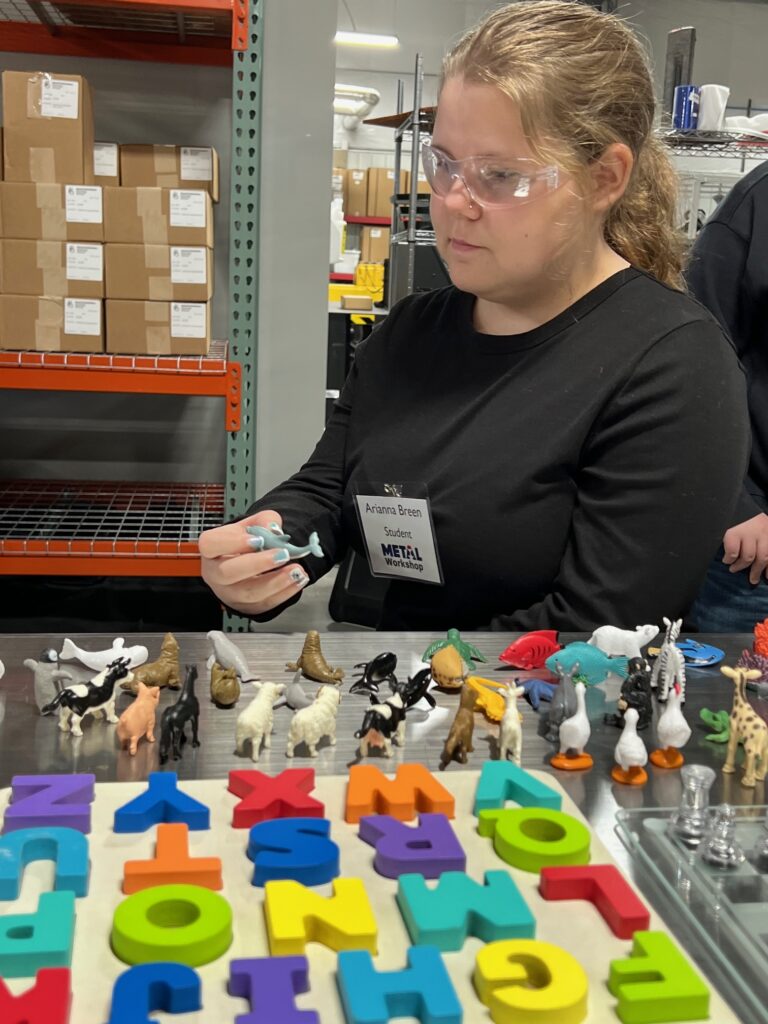
Whether it be CNC training, casting & forging, or advances in composites, IACMI is going to IMTS to ignite the what if—to set the spark of possibility. Maybe in 10 more years, we’ll look back and say, “That’s where it started.” By igniting the what if, we’re focused on achieving the what’s next.
For more, read The Story of Strati: 3D Printing a Car and meet the movers and shakers behind this project with How to Print the Audacious, Thursday, September 12, at IMTS 12:30-1:00pm CT.
